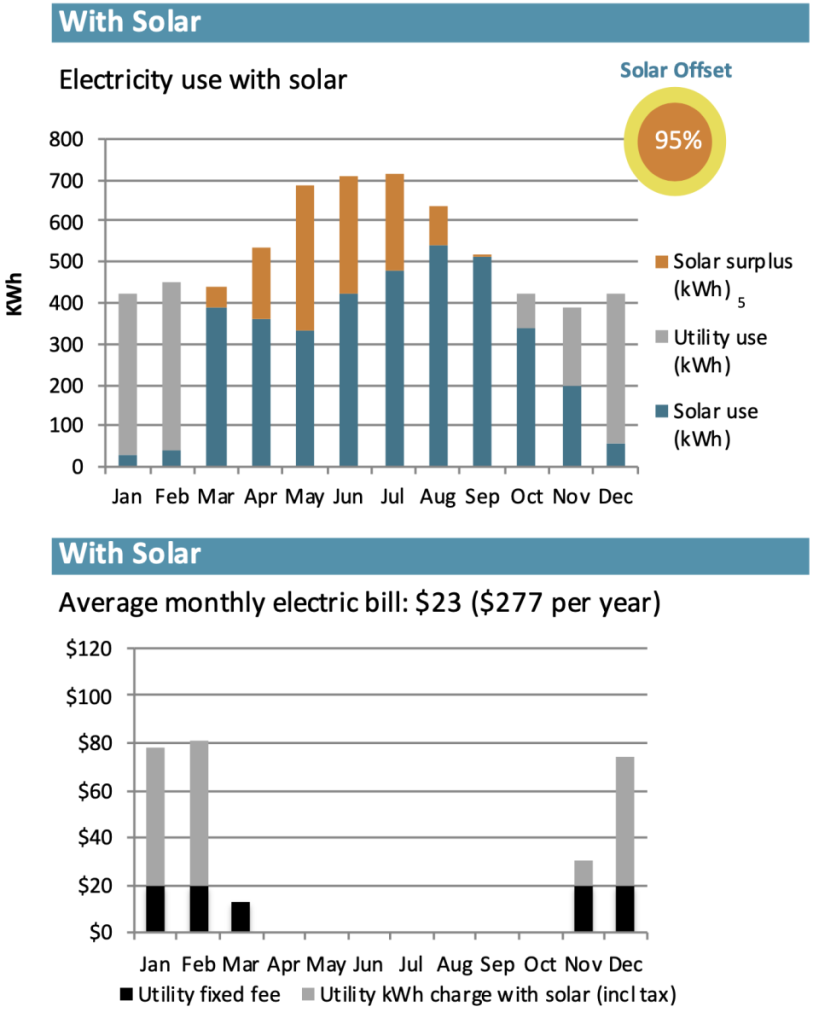Madison Gas and Electric meters solar customers on a monthly basis with rollover credits. That means that at the end of each monthly billing period, if you have produced more electricity than you have consumed during the billing period, the excess energy production is “bought back” by MG&E at the full retail rate. The “buyback” becomes monetary credit in your account and is automatically applied to your next month’s bill.

For example: if your home uses 375 kWh of electricity in April and your solar array produces 525 kWh in April, MG&E would credit your account $20.85 ($0.139 x 150 kWh) at the end of the billing cycle.
Credit in your account will continue to roll over from month-to-month until it is needed. This is wonderful for solar customers because excess energy produced during the summer months can be rolled over to the lower-producing winter months.
MG&E does have one special caveat: at the end of each monthly billing cycle, if a customer has produced more electricity than they used over the previous twelve months, MG&E automatically switches customers to a different “net seller” rate structure.
For example: at the end of the August billing cycle, your home has consumed 4800 kWh over the past 12 months but your solar array has produced 5000 kWh over the past 12 months, you would automatically be re-categorized as a “net seller.”
As a “net seller,” MG&E simply changes their metering from a monthly basis with full-rate rollover credits to a monthly basis with wholesale-rate rollover credits. This means that at the end of each monthly billing cycle, any excess energy you produced over what your household used during the month will be bought back by the utility at their wholesale rate, typically about $0.03 – $0.04 per kilowatt hour.
For example: if your home uses 525 kWh of electricity in August and your solar array produces 625 kWh in August, if your account has been switched to “net seller” status, MG&E would credit your account $3.50 ($0.03848 x 100 kWh) at the end of the billing cycle.
If in any future month you revert back to a “net producer” status, you will once again be compensated at the full retail rate for all excess solar production. To be switched back to “net producer” status, your home will need to have consumed more electricity than you have produced over the past 12 months.
For example: if your home uses more electricity than your solar array produces in November, but over the last 12 months combined, your array has produced more electricity than your home has consumed, you will continue to be in “net producer” status.
Bottom line: if you do not plan on increasing your home energy use in the next few years, we recommend sizing your solar array to produce around 95% of your historical annual electricity needs to avoid “net seller” status. Staying in “net producer” status will allow you to receive full monetary credit for any summer over-production while reducing your winter electricity bills as much as possible. While some customers may choose to over-size their system for environmental reasons or to prepare for a future EV, a system around 95% in size is the best balance of both the environmental and economic benefits of going solar.

